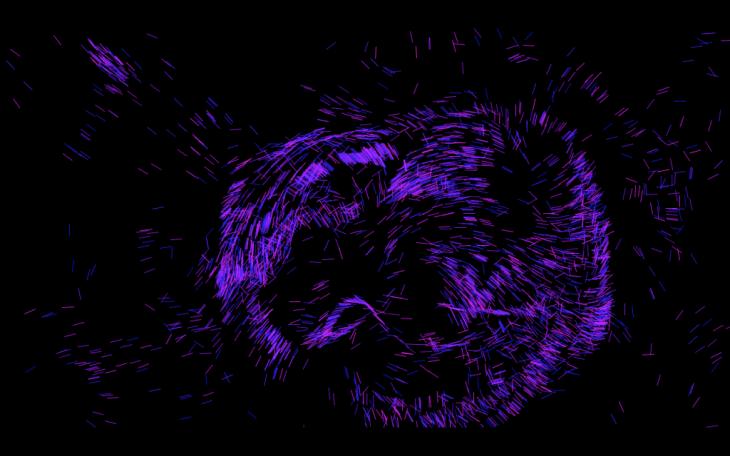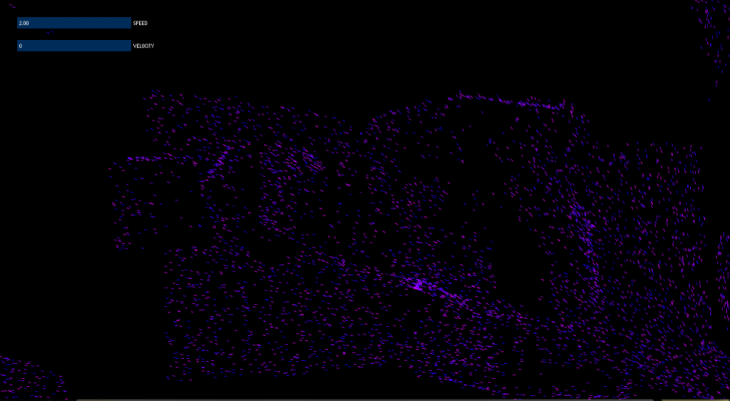An Aurora, sometimes referred to as a polar lights or northern lights, is a natural light display in the sky.
Auroras are produced when the magnetosphere is sufficiently disturbed by the solar wind that the trajectories of charged particles in both solar wind and magnetospheric plasma, mainly in the form of electrons and protons, precipitate them into the upper atmosphere, where the energy is lost.
The resulting ionization and excitation of the atmospheric constituents emits light of varying colour and complexity.
In this sketch, I tried to recreate the reaction that produces auroras, through the use of particles and swarm.
I started with a number of 15 points bouncing around the screen at an equal speed but random velocity.
I then added a swarm of 5000 particles which try to follow the points, without getting too close to them or to each other.
When hiding the points, the particles seem to move around randomly, but at the same time controlled by an external factor, creating therefore a morphogenetic system.
Through the use of sliders, the user can control both the speed of the particles, and the speed of the points, having the possibility of making the particles move faster and in a more confused way.

By pressing any key, the points will all move to the lower right corner, attracting therefore all the particles towards that point. Adding this command, my intention was to give the user the possibility of creating a sense of momentaneous order, before the driven disorder kicks back in again, and to give a sort of moment of relief.

The result of the smooth movement is pleasing and gives a sense of relaxation, although it’s driven by speed and randomly confused movements.
</p>
Emergent Morphogenetic Behaviour is a project of IaaC, Institute for Advanced Architecture of Catalonia
developed at Master in Advanced Architecture, in 2016/2017 by:
Students: Camilla Franchini.
Tutor: Angelos Chronis.